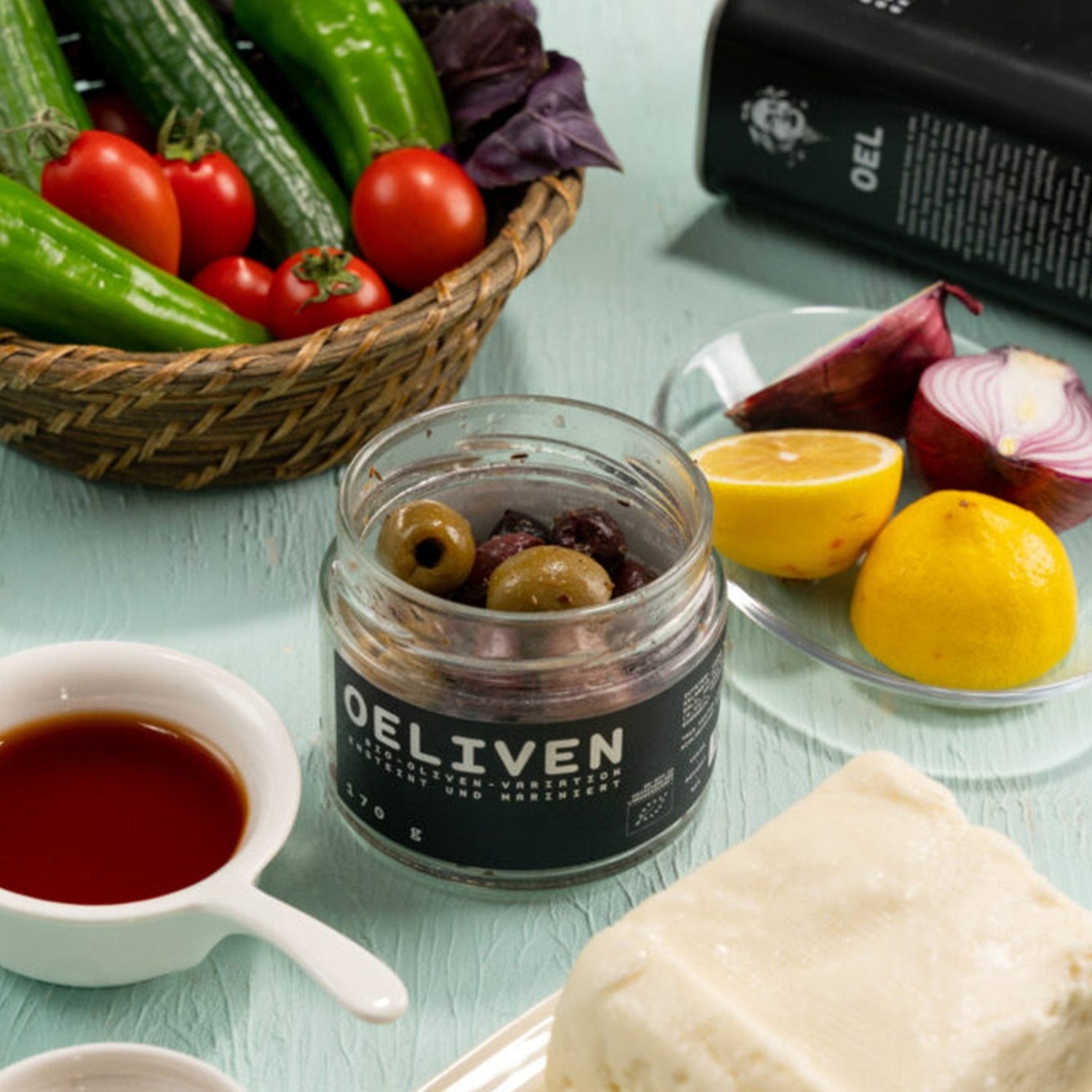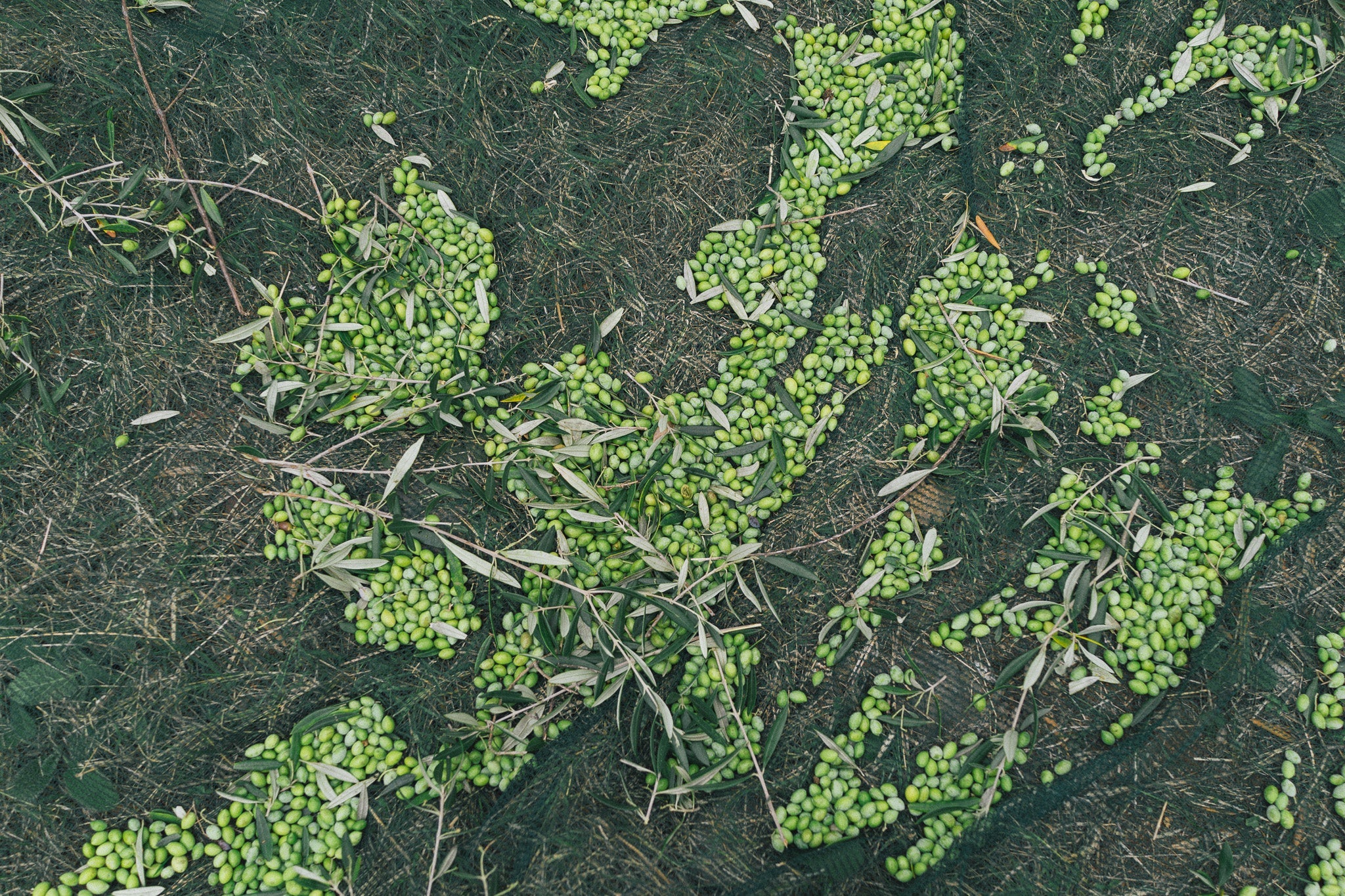Are edible olives actually fermented – or what exactly happens between the tree and the plate?

Contents
Fermentation of olives?
Have you ever eaten olives straight from the tree?
Anyone who has tried it knows that it is not enjoyable.
Unprocessed olives straight from the tree are inedible. They taste extremely bitter, are hard, and have no flavor comparable to what you'd expect from pizza, salad, or appetizers.
But what exactly happens between the tree and the plate?
How does this olive aroma that we all love so much come about?
The secret is the fermentation of olives .
We'll explain how it works and what happens here.


1. What is fermentation?
Traditional way of preservation
Fermentation is a natural way of preserving food using microorganisms and yeasts.
Where you already know fermentation from:
- sauerkraut
- kefir
- Kombucha
- Kimchi
What happens during fermentation
Fermentation involves preparing vegetables (and, in rare cases, fruit) in such a way that ideal conditions are created for certain microorganisms, usually lactic acid bacteria and yeasts. These microorganisms transform the food—for example, in the case of sauerkraut, white cabbage—so that it lasts for a very long time.
How does this work?
Lactic acid fermentation creates an environment in which mold or putrefactive bacteria cannot thrive. This keeps the food edible—and likely even supports healthy intestinal flora.
"He who steals cabbage in summer will have sauerkraut in winter"


2. Olive fermentation
The fermentation process in detail
97 yeasts and 45 lactic acid bacteria have been identified that are involved in the fermentation of olives.
Initially, it's primarily the yeasts that are at work. They produce enzymes that break down the oleuropein and thus reduce the bitterness of the olives.
They are also responsible for developing the typical olive aroma and making the flesh softer.
Over time, the lactic acid bacteria take over. They convert sugar into lactic acid. This lowers the pH and kills off putrefactive bacteria, for example.
The lactic acid bacteria are also responsible for the characteristic taste of olives.
What is the result of olive fermentation?
- The taste changes
- The olive becomes softer
- The core dissolves more easily
- The olives have a longer shelf life
- Mold and putrefactive bacteria have no chance
Our recommendation
Different methods of olive fermentation
There are various traditional methods for fermenting olives, and these directly affect the flavor of the olives.
Fermentation of green olives in Spain :
- Pickling in lye and brine
- Rapid colonization of lactic acid bacteria
- Less development of yeast
- Clear, sour taste profile
Natural fermentation of olives in Greece :
- Spontaneous development of microorganisms without the use of lye, only with brine
- Greater diversification of lactic acid bacteria and yeasts
- Richer and more diverse flavor profiles
3. Other factors
What else plays a role in olive fermentation
The olive variety, natural factors such as weather, cultivation and harvesting methods, and the time of harvest also play a role in the fermentation of olives.
The harvest time
- Early harvested olives have a lower sugar and higher phenol content, so more sharpness and acidity develop during fermentation
- Late-harvested olives have a higher aldehyde content, resulting in a "greener," fruitier aroma .
Our Kalamon olives – also known as Kalamata olives – come pitted but with a delicious Mediterranean marinade made from virgin olive oil and oregano.
Like all our olives, they are first fermented and then vacuum-sealed in jars.
This way, nothing can happen to these little gems on their long journey from Greece to your kitchen.
4. Olive fermentation as a natural process
The entire fermentation process is an ancient method of making food more delicious and longer lasting using naturally occurring processes. Fermented food is, in the truest sense of the word, a living food .
This stands in sharp contrast to modern methods of preservation, which aim to eliminate all living organisms through sterilization (e.g., pasteurization). This often results in the loss of nutrients and vitamins.
The fermentation of olives, especially the traditional Greek method, works hand in hand with natural organisms.
It is not always easy to establish and maintain the right balance of microorganisms.
Studies on the exact processes and conditions of successful fermentation help to optimally support the natural processes.
In this way, olives can also be naturally fermented on a large scale - for more taste and well-being .
5. When olive fermentation goes wrong
As we have seen, olive fermentation requires a good balance of numerous different microorganisms, especially lactic acid bacteria and yeasts.
Fermentation is only successful if the pH value is kept low and the correct sequence and composition of the natural agents is ensured.
Especially with natural fermentation, things can sometimes go wrong.
If the balance is upset , gases, alcohol, mold or rot can form and the olives become inedible.
Fermented olives
Naturally preserved
Tasty
Rich in lactic acid bacteria for the intestinal flora
Variety of complex flavors
Our recommendation
Green olives are first fermented in brine, which takes several months. They are then briefly grilled and vacuum-sealed in a jar with a spicy marinade made from the hot Bukovo pepper, garlic, extra virgin olive oil, and a splash of vinegar.
Then the savory delicacy will be safely packaged and sent on its way to Germany, and hopefully will soon land safely on your plate.



Leave a comment
All comments are moderated before being published.
This site is protected by hCaptcha and the hCaptcha Privacy Policy and Terms of Service apply.